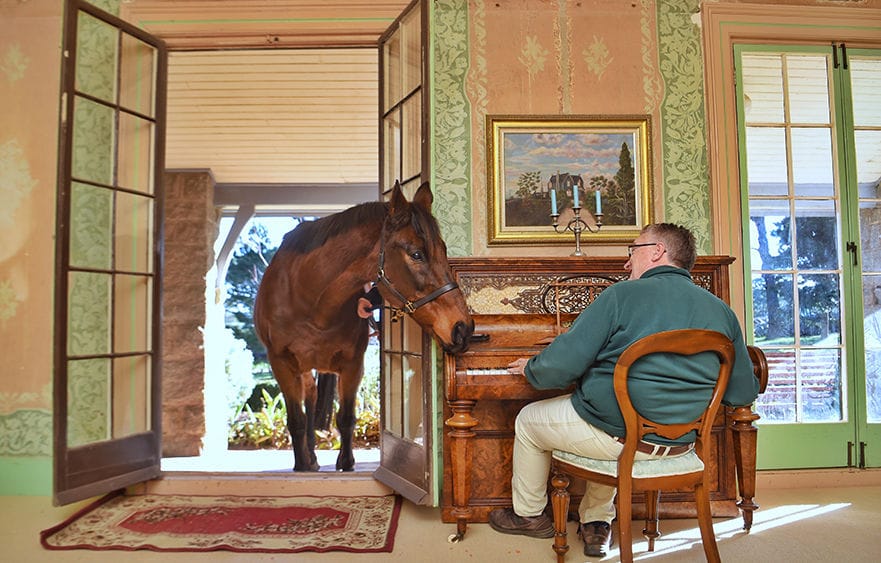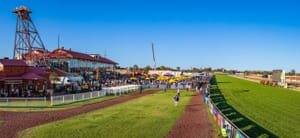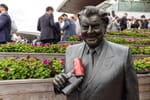Chief De Beers’ elevation to the Queensland Hall of Fame is a fitting reflection of his amazing deeds on the track. But as Matt Stewart reports, his legend only grew when he left his racing career behind him.
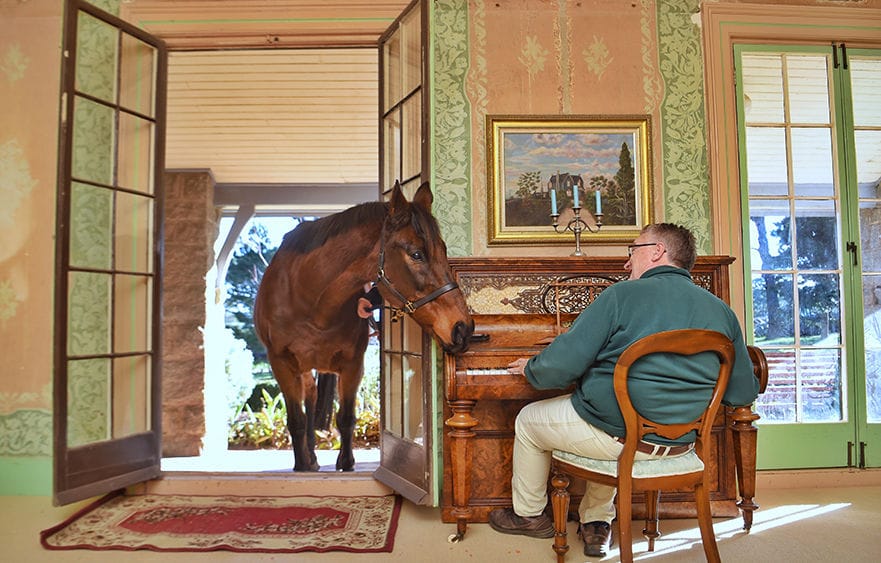
Every now and then, a racehorse rises above the racetrack to challenge the notion of greatness. Subzero was one. Chief De Beers was another.
The old racetrack heroes, now part of the Living Legends tribute farm, are getting out and about in the non-racing community, filling the priceless void left by Subzero and Chief De Beers, champions who became greater than their fame on the track.
They were true heroes, not just horses that were faster than the rest.
As his second career became folklore, it became incidental that Subzero had won the Melbourne Cup. In the community beyond the bubble of racing he was a big but kind animal who endeared himself to school children, the elderly and the disabled.
His service was not to racing but the relationship between species: horse and human.
Chief De Beers was known by some as a quirky ex-racer who could only win at Doomben - 20 times mind you, including two Doomben 10,000s. Under the guidance of trainer Bill Calder, he became a cult hero, then a champion.
But to the Queensland Mounted Police and especially Acting Sergeant Belinda Worthington, Chief De Beers was also known as a fearless protector of the community.
Chief De Beers, who died at Living Legends near Melbourne at age 28 in 2020, will be inducted into the Queensland Racing Hall of Fame on October 12, alongside trainer Tony Gollan and jockey Mick Pelling. It is a fitting honour for a horse whose champion qualities shine long after his racing days concluded.
Days before his death, he was awarded Queensland’s prestigious Blue Cross Medal, the highest community service awarded to an animal and evidence of how important he had become.
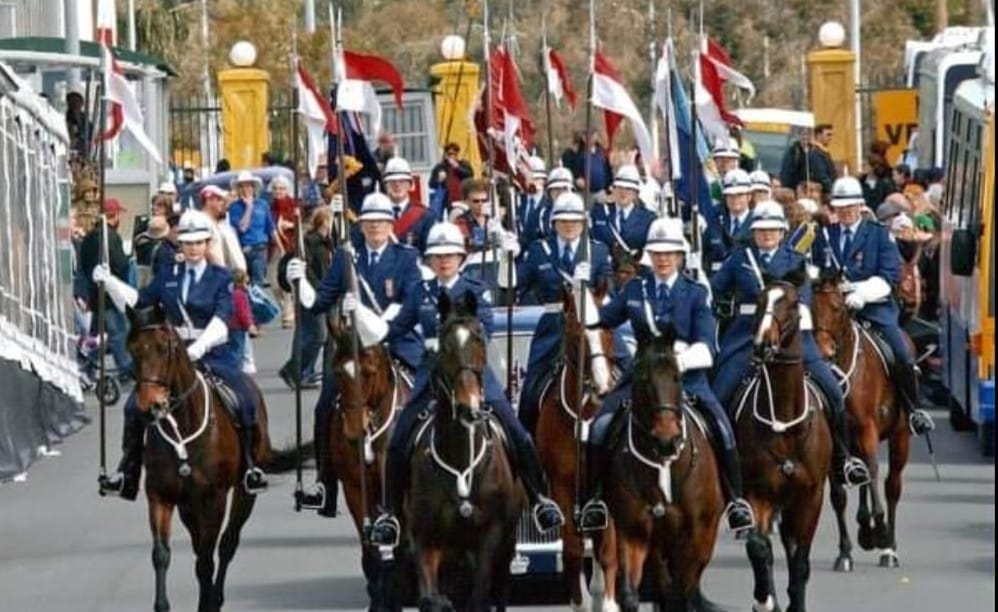
If the greatness of a horse can be attributed beyond mere speed and stamina, then Chief De Beers ranks among the greatest, a combination of Subzero, Bill The Bastard and Phar Lap.
For Worthington, now retired from the Police Service after almost 27 years of duty, Chief De Beers played an intimate and important role.
For nine years as a mounted officer through all the job entailed, pub brawls, bushfires and long and often hazardous days on the beat, the old champion was her guardian.
“I’d been riding, training and competing with horses since childhood, so I felt very safe working with them in a policing capacity, the Chief especially,” Worthington told The Straight.
“He was a brave and smart little horse - and we quickly developed mutual respect and trust in each other.”
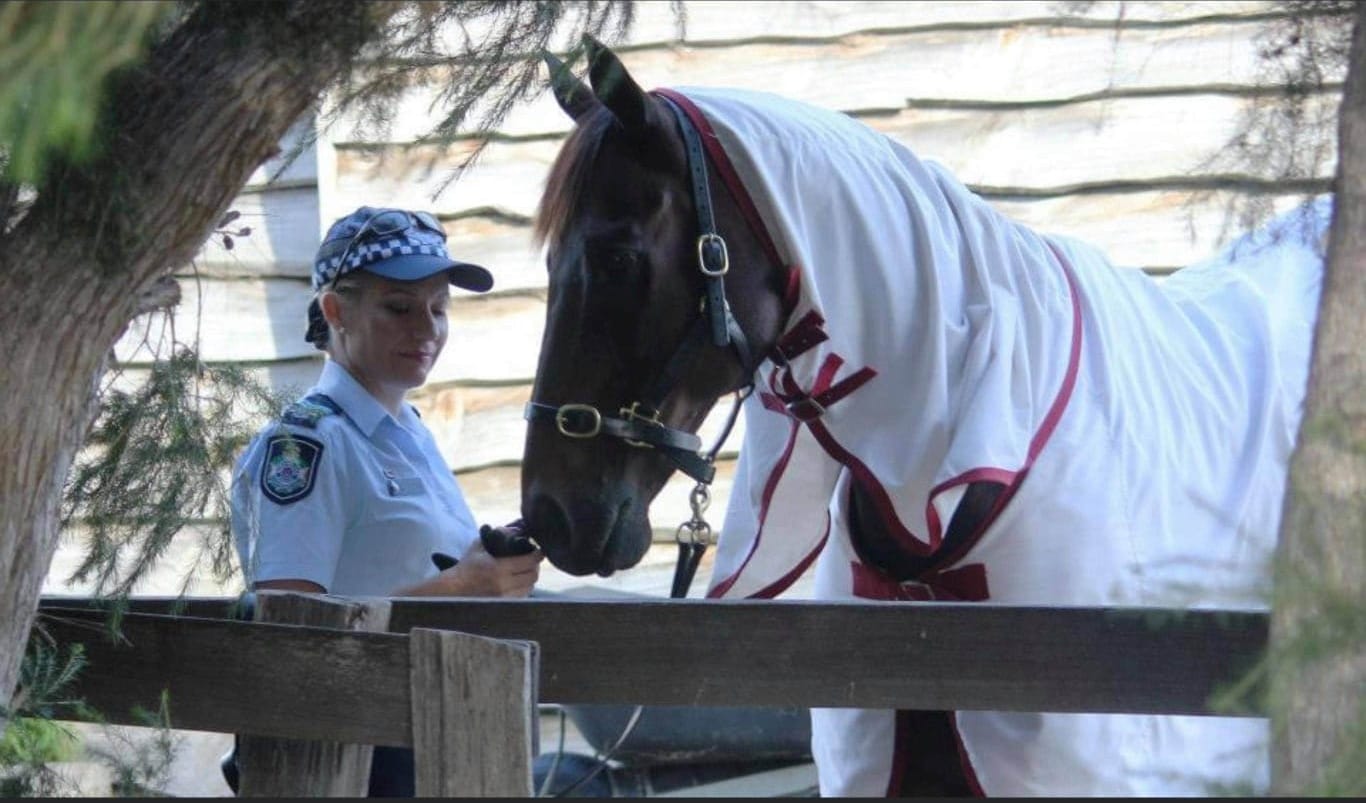
That trust was forged in countless moments where Worthington needed the poise and power of Chief De Beers to get the job done.
“During a response to a street brawl occurring outside a pub, I needed to ride him between two groups. We ended up, inadvertently, on to tiles. His hooves slipped and lost traction, but he quickly recovered his balance without panic and moved straight off my leg aid and back onto the concrete,” she said.
“I knew I’d be safe so long as I stayed on his back. There was a real scrap going on around us but he didn’t let me down."
That wasn’t the only time he was asked to walk into the fire, quite literally in some cases.
“We were called to a fairly large parkland bushfire to take up with the QFRS and hopefully locate the arsonists leaving the scene,” Worthington recalls.
“Each side of the dirt road was burning and "Chiefy" didn’t hesitate or freeze - the QFRS watered down a safe pathway. Chief’s big heart was pounding against my legs, and most horses would have bolted in fear.
“The fire and trees were literally crackling around us, and the smoke was thick, but he continued straight through and waited patiently while I spoke with the firies.
“His sensible demeanour helped reassure my partner’s horse - and I realised that day just how special he was.”
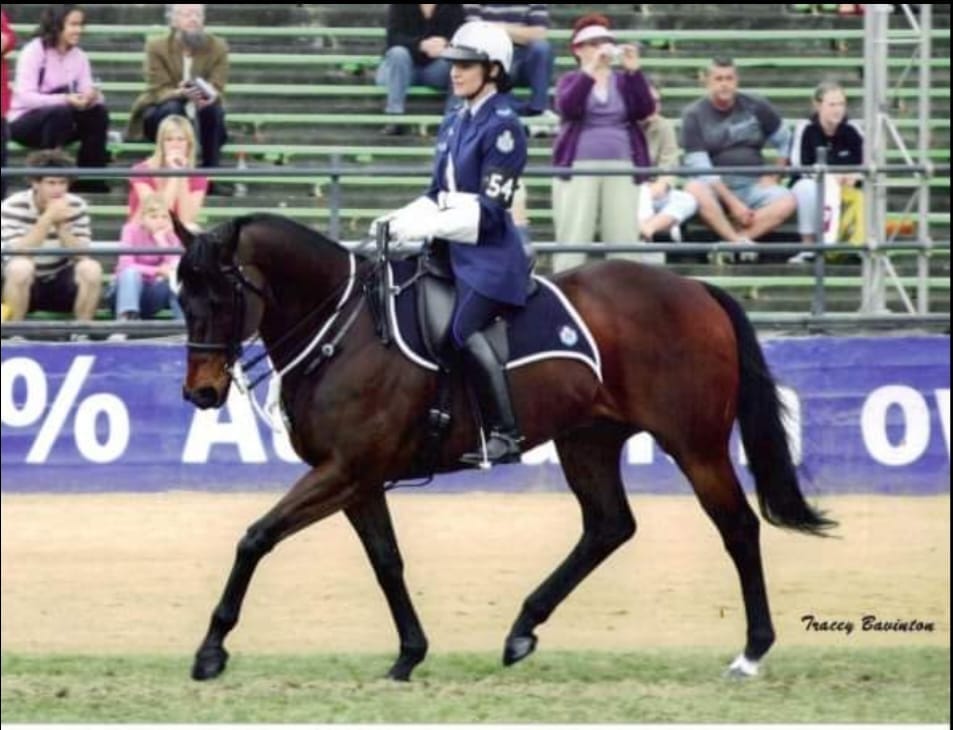
When Chief De Beers first arrived at the Police stables, as a recruit with $1.5 million in the bank, mounted officers quickly grasped why he had been such a champion on the racetrack.
One trait could not be teased out of him: the desire to win.
“He had an incredible temperament and plenty of quirks. He was extremely gutsy, and I guess that’s what makes good racehorses so good,” Worthington said.
“I could tell he had been a competitive racehorse because of his uncanny drive to be at the front of a group.
“Whilst performing ceremonial parades, events or troop drill, he would get more and more explosive and agitated until he was out at the front - after which he would relax and happily plod along like he was on a holiday."

He continued to follow Subzero’s hoofsteps out of the racetrack and into the community.
He and Worthington travelled far and wide, mostly for police duties but once, when retired, before the Hobart Cup, at a crowded Salamanca market where Chief De Beers raided a vegetable stall and took off with a bunch of carrots.
Andrew Clarke, from Living Legends, chuckles as recalling that story.
“He had some lady chasing after him trying to get her carrots back!” Clarke said.
He also competed in events at the Queensland Ekka at the Brisbane Showgrounds and was awarded many troop horse honours.
Worthington partnered with Chief De Beers for almost nine years until mid-2009. The gelding was retired from the Force in 2012 before joining Living Legends where he became first port of call for many Queenslanders arriving via Tullamarine.
“He was a brave and smart little horse - and we quickly developed mutual respect and trust in each other” - Belinda Worthington
Chief De Beers was a surprisingly popular attraction. He was a Queenslander who never won a race in Melbourne, or anywhere other than Doomben.
But he had an infectious personality, Clarke said, and a homage attraction for visiting banana benders.
“As soon as you saw someone wander into the farm in board shorts and thongs you knew they’d jumped off the plane from Brisbane at Tullamarine and come especially to see Chief De Beers,” he said.
On the racetrack, he was famous for being a champion but also an enigma for winning only at one track. He’d cross the road to Eagle Farm and seemingly lose a leg.
Regular rider Shane Scriven told Racing Queensland that Chief De Beers’ inability to win anywhere bar Doomben was “a mystery”.
“He was good enough to win at other tracks but why he didn’t – I do not know. I rode him at Moonee Valley in a high-class race and thought that would suit him and he couldn’t win there,” Scriven said.
“He just loved Doomben and it is a little bit too much of a record to say it was a coincidence but I think I have to say it was a coincidence.”
The quirks of his racing career are not something Worthington ponders when remembering Chief De Beers.
“In my time with the Police Service, working with Chief was the highlight. He was an incredible partner and buddy and working with him was an honour I'll never forget,” she said.

